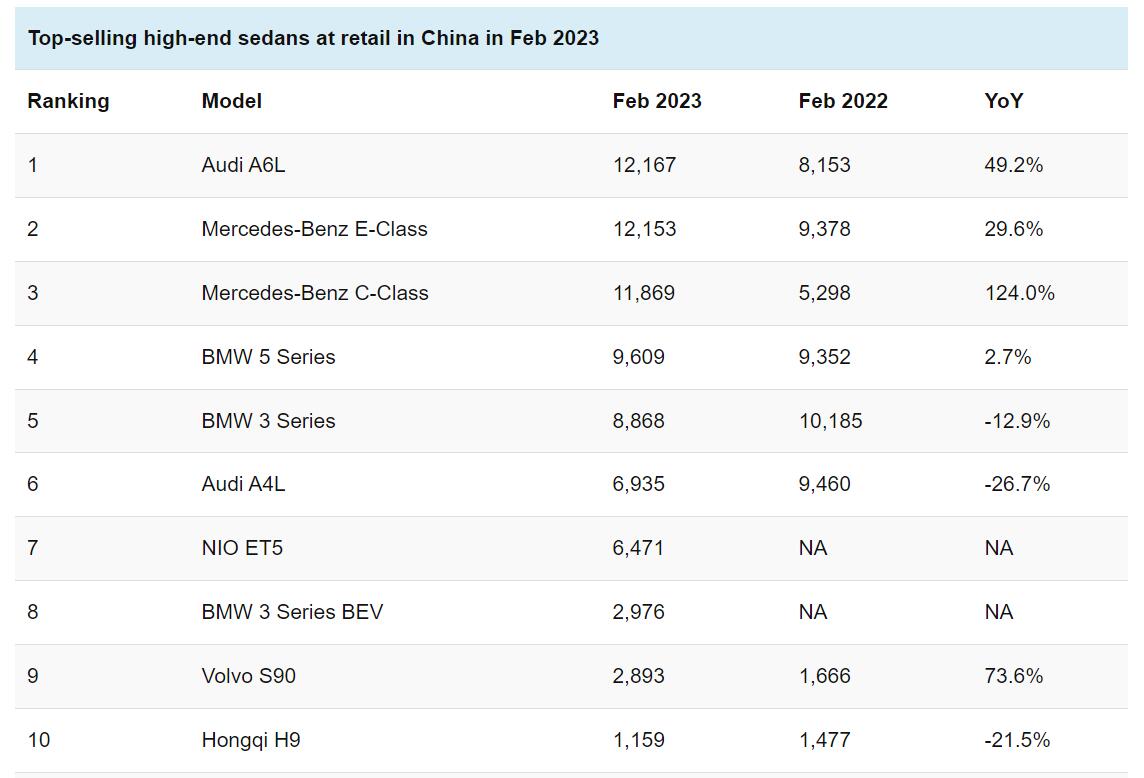More Than BMW And Porsche: The Broader Challenges For Automakers In China

Table of Contents
China's automotive market, while seemingly dominated by established luxury brands like BMW and Porsche, presents a complex landscape of challenges for automakers beyond simply competing for premium buyers. This article delves into the broader hurdles facing companies aiming for success in this dynamic market.
Navigating the Shifting Chinese Consumer Landscape
The Chinese automotive market is undergoing a rapid transformation, driven by evolving consumer preferences and the rise of domestic brands. Understanding these shifts is crucial for any automaker hoping to succeed.
The Rise of the Domestic Brands
Chinese automakers are no longer playing catch-up. Brands like BYD, Nio, and Xpeng are producing high-quality, technologically advanced vehicles, aggressively challenging established players.
- Increased quality and technological advancements: Chinese automakers are investing heavily in R&D, resulting in vehicles that rival, and in some cases surpass, foreign competitors in terms of features and performance.
- Growing consumer preference for domestic brands: A rising sense of national pride and the perception of improved quality are driving increased demand for domestically produced vehicles.
- Aggressive pricing strategies: Local brands often offer competitive pricing, making them attractive to budget-conscious consumers.
- Government support for the domestic auto industry: Subsidies and other government initiatives are bolstering the growth of Chinese automakers.
This surge in domestic competition is significantly impacting the market share and strategies of foreign automakers, forcing them to innovate and adapt to remain competitive.
Evolving Consumer Preferences
Chinese consumers are increasingly discerning and demanding. Their preferences are evolving rapidly, driven by technological advancements and changing lifestyles.
- Demand for electric vehicles (EVs): China is a global leader in EV adoption, with consumers showing a strong preference for electric and hybrid vehicles.
- Focus on technological features: Connectivity, autonomous driving capabilities, and advanced driver-assistance systems (ADAS) are highly sought-after features.
- Growing preference for SUVs and MPVs: These vehicle types are gaining popularity due to their practicality and spaciousness.
- Emphasis on brand image and social status: The vehicle a consumer chooses often reflects their social standing and aspirations.
- Importance of online and digital marketing: Chinese consumers heavily rely on online platforms for research and purchasing decisions.
Automakers must adapt their product offerings and marketing strategies to cater to these evolving preferences, prioritizing technology, connectivity, and a strong digital presence.
The Importance of Localized Marketing and Strategy
A one-size-fits-all approach won't work in China. Automakers must tailor their strategies to resonate with the diverse regional preferences and cultural nuances.
- Understanding regional variations: Consumer preferences vary significantly across different regions of China.
- Adapting marketing messages: Marketing campaigns need to be culturally relevant and resonate with Chinese consumers.
- Building strong relationships with local dealers and distributors: A robust distribution network is crucial for success.
- Navigating the complex regulatory environment: China's automotive regulations are complex and require careful navigation.
Simply translating marketing materials is insufficient. Automakers need to develop deeply localized strategies that address the specific needs and preferences of Chinese consumers in each region.
Overcoming Regulatory and Infrastructure Hurdles
Beyond consumer preferences, automakers face significant regulatory and infrastructural challenges in China.
Stringent Emission Standards and Regulations
China has implemented increasingly stringent emission standards, pushing automakers to invest in cleaner technologies.
- Compliance with increasingly strict emission standards (EV mandates): Meeting these standards requires significant investment in R&D and new technologies.
- Navigating complex approval processes: The regulatory process for new vehicles can be lengthy and complex.
- Investment in R&D for cleaner technologies: Automakers must commit to developing and deploying cleaner technologies to meet regulatory requirements.
Adhering to these regulations has significant financial and operational implications, demanding substantial investments and strategic planning.
Developing Charging Infrastructure
The lack of widespread charging infrastructure in some areas remains a significant barrier to EV adoption.
- Lack of widespread charging infrastructure in certain regions: This limits the range and convenience of EVs for many consumers.
- Investment in charging network development: Automakers and the government need to work together to expand the charging network.
- Collaboration with government and private entities: Public-private partnerships are crucial for building a robust charging infrastructure.
- Addressing range anxiety concerns among consumers: Educating consumers about EV technology and alleviating concerns about range is vital.
Inadequate charging infrastructure directly impacts EV adoption rates, and addressing this issue is crucial for the growth of the electric vehicle market.
Supply Chain Challenges and Geopolitical Factors
Global supply chain disruptions and geopolitical tensions pose significant risks to automakers operating in China.
- Dependence on global supply chains: Many automakers rely on global supply chains, making them vulnerable to disruptions.
- Trade tensions and tariffs: Trade disputes can impact the cost and availability of components.
- Potential disruptions caused by geopolitical instability: Unforeseen geopolitical events can significantly disrupt operations.
Foreign automakers relying on global supply chains within the Chinese market need to carefully assess and mitigate these vulnerabilities to ensure operational stability and resilience.
Competing Effectively on Price and Value
Balancing premium pricing with competitive pressure is a key challenge for automakers in China.
Balancing Premium Pricing with Competitive Pressure
Domestic brands often offer compelling value propositions at competitive prices, forcing foreign automakers to find ways to justify their premium positioning.
- Pressure from domestic brands offering competitive pricing: This requires a strategic approach to pricing and value creation.
- Balancing brand image with affordability: Maintaining brand image while offering competitive pricing is a delicate balance.
- Exploring different pricing strategies based on segments: Different pricing strategies may be appropriate for different market segments.
Automakers must find ways to justify their premium pricing by offering superior quality, innovative features, and exceptional customer service.
Offering Value-Added Services and Features
Adding value beyond the core product is crucial for enhancing competitiveness.
- Providing superior after-sales service: Excellent customer service can differentiate a brand in a competitive market.
- Developing innovative digital services: Offering connected car services and other digital features can enhance the ownership experience.
- Offering bundled packages and subscription models: Providing flexible and attractive purchasing options can increase appeal.
By offering value-added services and features, automakers can enhance the overall ownership experience and justify premium pricing, maintaining a competitive edge in the Chinese market.
Conclusion
The Chinese automotive market presents a compelling yet challenging environment for automakers. Success requires more than just offering premium vehicles; it demands a deep understanding of the evolving consumer landscape, navigating complex regulations, and building a robust and localized strategy. To thrive in this dynamic market, companies must adapt to changing consumer preferences, invest in electric vehicle technology, and build strong relationships with both consumers and the government. Ignoring these broader challenges, focusing solely on established luxury brands, risks overlooking the massive potential and significant obstacles present for all automakers in China. Understanding and proactively addressing these issues is crucial for long-term success in this rapidly evolving market. Start strategizing your approach to the unique challenges facing automakers in China today.

Featured Posts
-
 La Lucha Por La Bota De Oro 2024 25 Sin Messi Y Ronaldo
Apr 25, 2025
La Lucha Por La Bota De Oro 2024 25 Sin Messi Y Ronaldo
Apr 25, 2025 -
 Ryujinx Emulator Shut Down Following Nintendo Contact
Apr 25, 2025
Ryujinx Emulator Shut Down Following Nintendo Contact
Apr 25, 2025 -
 Shingles Vaccine And Dementia Risk What The Latest Research Shows
Apr 25, 2025
Shingles Vaccine And Dementia Risk What The Latest Research Shows
Apr 25, 2025 -
 New Crime Thriller Dope Thief Trailer Cast And Release Date Revealed
Apr 25, 2025
New Crime Thriller Dope Thief Trailer Cast And Release Date Revealed
Apr 25, 2025 -
 Analyzing Matthew Golden A 2025 Nfl Draft Profile For Texas Wr
Apr 25, 2025
Analyzing Matthew Golden A 2025 Nfl Draft Profile For Texas Wr
Apr 25, 2025
Latest Posts
-
 Mets Rivals Ace A Career Defining Season
Apr 28, 2025
Mets Rivals Ace A Career Defining Season
Apr 28, 2025 -
 Unstoppable A Mets Rivals Starting Pitcher
Apr 28, 2025
Unstoppable A Mets Rivals Starting Pitcher
Apr 28, 2025 -
 Mets Biggest Rival Their Starting Pitchers Dominance
Apr 28, 2025
Mets Biggest Rival Their Starting Pitchers Dominance
Apr 28, 2025 -
 Mets Rival A Pitchers Unbeatable Season
Apr 28, 2025
Mets Rival A Pitchers Unbeatable Season
Apr 28, 2025 -
 Mets Rotation Battle Significant Change Elevates One Starter
Apr 28, 2025
Mets Rotation Battle Significant Change Elevates One Starter
Apr 28, 2025
